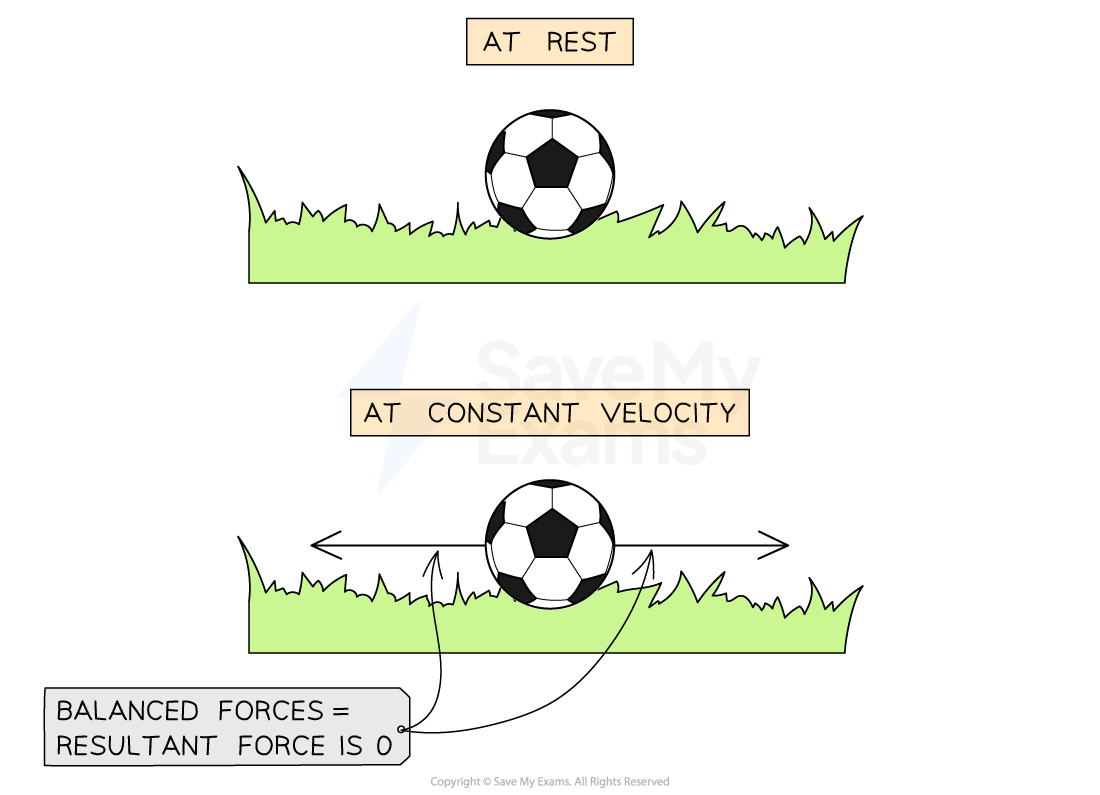Newton’s First Law
- Newton's laws of motion describe the relationship between the forces acting on objects and the motion of the objects
- Newton's first law of motion states:
A body will remain at rest or move with constant velocity unless acted on by a resultant force
- This means that:
- An object at rest will remain at rest unless acted upon by a resultant force
- An object moving with a constant velocity will remain moving at that constant velocity unless acted upon by a resultant force
- A resultant force is required to change the motion of an object
- To speed up
- To slow down
- To change direction
- If the resultant force acting on an object is zero, it is said to be in translational equilibrium
- If the resultant force is zero (the forces on a body are balanced), the body must be either:
- At rest
- Moving at a constant velocity

For both cases of the football being at rest or moving at a constant velocity, its resultant force is 0
- Since force is a vector, it is easier to split the forces into horizontal and vertical components
- If the forces are balanced:
- The forces acting to the left = the forces acting to the right
- The forces acting upward = the forces acting downward
- The resultant force is the vector sum of all the forces acting on the body
Worked example
If there are no external forces acting on the car other than friction, and it is moving at a constant velocity, what is the value of the frictional force Ff?

Answer:
- Since the car is moving at a constant velocity, there is no resultant force. This means that the driving force and the frictional forces are balanced.
- Therefore, Ff = 6 kN
Exam Tip
This law may sound counter-intuitive for an object that is moving at constant velocity. How can it be moving if the forces on it are balanced?
This is because a resultant force causes an acceleration. An object moving at constant velocity has no acceleration, so its forces must be balanced, which means the resultant force is zero. The drag forces are invisible to us, which makes this tricky to see.

